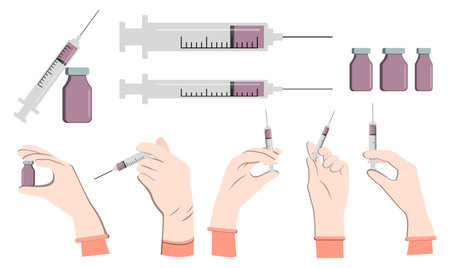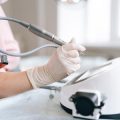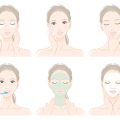1. Understanding PRP Therapy for Hair Loss
Hair loss can be a frustrating and confidence-shaking experience, but modern treatments like Platelet-Rich Plasma (PRP) therapy offer hope. PRP therapy is a non-surgical procedure that utilizes the body’s own healing properties to stimulate hair growth. But how does it work, and why is it becoming a popular option for hair restoration?
What is PRP Therapy?
Platelet-Rich Plasma (PRP) therapy is a treatment that involves drawing a small amount of your blood, processing it to concentrate the platelets, and then injecting this enriched plasma into the scalp. Platelets contain growth factors that help repair tissues and stimulate hair follicles, encouraging natural hair regrowth.
How Does PRP Work for Hair Restoration?
The process of PRP therapy involves three key steps:
- Blood Draw: A small amount of blood is taken from your arm.
- Centrifugation: The blood sample is placed in a centrifuge, where its spun at high speeds to separate platelet-rich plasma from other components.
- Scalp Injections: The concentrated PRP is injected into areas of the scalp experiencing hair thinning or loss.
Why Is PRP Used for Hair Loss?
PRP therapy has gained popularity as a hair restoration treatment because it uses natural growth factors from your own body to rejuvenate weakened hair follicles. Here’s why people choose PRP for hair loss:
| Benefits of PRP Therapy | Description |
|---|---|
| Non-Surgical | Avoids invasive procedures like hair transplants. |
| Natural Treatment | No synthetic chemicals or medications involved. |
| Minimal Downtime | You can resume normal activities soon after treatment. |
| Stimulates Natural Growth | Enhances hair follicle activity using the bodys own healing factors. |
| Safe and Effective | A widely used procedure with minimal side effects. |
2. The PRP Procedure: Step-by-Step Guide
Platelet-Rich Plasma (PRP) therapy for hair loss is a multi-step process that involves drawing blood, processing it to concentrate the platelets, and injecting the PRP into the scalp. Understanding each step can help ease any concerns about discomfort or pain during the procedure.
Step 1: Blood Extraction
The first step in PRP therapy is drawing a small amount of blood from the patient’s arm, similar to a routine blood test. Most patients experience only mild discomfort from the needle prick, which lasts just a few seconds.
Step 2: Centrifugation – Separating the Platelets
Once the blood is collected, it is placed into a centrifuge machine. This device spins at high speed to separate the plasma, which contains growth factors essential for hair restoration. The process usually takes about 10–15 minutes.
Step 3: Preparing the PRP Solution
After centrifugation, the platelet-rich portion of the plasma is extracted and prepared for injection. Some clinics may add activating agents to enhance its effectiveness.
Step 4: Numbing the Scalp
Before injections begin, a numbing cream or local anesthetic is applied to minimize discomfort. This helps ensure that the procedure remains as painless as possible.
Step 5: PRP Injections into the Scalp
The final step involves injecting the PRP solution directly into areas of thinning hair using fine needles. The injections are spaced evenly across the scalp to stimulate hair follicles effectively. Patients typically report mild pressure or pinching sensations rather than significant pain.
What Patients Can Expect During Treatment
| Stage | Description | Pain Level (1-10) |
|---|---|---|
| Blood Draw | A quick needle prick to collect blood. | 1-2 |
| Centrifugation | The blood is processed in a machine. | 0 (No pain) |
| Numbing Process | A topical anesthetic is applied to reduce discomfort. | 1-2 |
| PRP Injections | Tiny injections across the scalp. | 2-4 (Mild discomfort) |
The entire PRP session typically takes around 45 minutes to an hour, making it a convenient option for those with busy schedules. Since there is little to no downtime, most patients can resume their daily activities immediately after treatment.
![]()
3. Is PRP Treatment Painful?
One of the most common concerns about PRP therapy for hair loss is whether or not the procedure is painful. While pain tolerance varies from person to person, most patients describe the treatment as mildly uncomfortable rather than intensely painful. Lets take a closer look at what you can expect during the procedure.
Understanding the Discomfort Levels
PRP therapy involves drawing a small amount of your blood, processing it to extract platelet-rich plasma, and then injecting it into your scalp. Each step of this process may cause different sensations:
| Step | Sensation |
|---|---|
| Blood Draw | A slight pinch or prick from the needle, similar to a routine blood test. |
| PRP Injection | A mild to moderate stinging or pressure sensation at the injection site. |
| Post-Treatment | Mild soreness or tenderness in the treated areas, which usually subsides within a day or two. |
Pain Management Techniques
Although PRP injections can be slightly uncomfortable, there are several ways to minimize pain during the procedure:
- Topical Numbing Cream: Many clinics apply a numbing cream before treatment to reduce discomfort.
- Cooling Devices: Some providers use cold air or ice packs to numb the area before injections.
- Fine-Gauge Needles: Using ultra-thin needles can help make injections feel less painful.
- Pain Tolerance Varies: Some patients report only minor discomfort, while others find it more noticeable but manageable.
What Sensations Can You Expect?
During the injections, you might feel a quick pinch followed by mild pressure as the PRP is injected into your scalp. Some people describe it as a tingling or burning sensation that lasts for just a few seconds per injection site. If youre worried about discomfort, talk to your provider beforehand—they can adjust their technique or offer additional numbing options to help keep you comfortable.
Does PRP Therapy Require Downtime?
The good news is that PRP therapy has minimal downtime. While you may experience slight tenderness and redness in the treated areas for a short period, most people resume their normal activities immediately after the session.
Final Thoughts on Pain Levels
If youre considering PRP therapy for hair loss but are concerned about pain, rest assured that most patients find it very tolerable. With proper pain management techniques in place, any discomfort is usually minimal and short-lived.
4. Recovery and Aftercare
What to Expect After PRP Therapy
After undergoing PRP therapy for hair loss, most patients experience minimal downtime. However, it’s normal to notice some mild side effects in the treated area. Understanding what to expect can help you prepare for a smooth recovery.
Potential Side Effects
The side effects of PRP therapy are usually mild and temporary. Below is a table outlining some common post-treatment effects and how long they typically last:
| Side Effect | Description | Duration |
|---|---|---|
| Mild Swelling | Slight puffiness around the injection sites | 1-2 days |
| Tenderness | Sensitivity in the scalp, similar to a mild sunburn | A few hours to 48 hours |
| Redness | Slight redness at the injection points | A few hours to one day |
| Mild Bruising | Tiny bruises may appear where injections were administered | A few days to a week |
Recommended Aftercare Practices
Your scalp needs time to heal after PRP therapy. Following these aftercare tips can help ensure the best possible results:
- Avoid Washing Your Hair: Wait at least 24 hours before washing your hair to allow the treatment to settle.
- No Harsh Hair Products: Avoid using chemical-based hair products, including dyes and styling gels, for at least two days.
- Avoid Direct Sun Exposure: Protect your scalp from direct sunlight for a few days by wearing a hat if needed.
- No Strenuous Exercise: Avoid intense physical activity for at least 24-48 hours to prevent excessive sweating and irritation.
- No Alcohol or Smoking: Both can slow down healing and should be avoided for at least a few days after treatment.
Recovery Timeline
The recovery period for PRP therapy is relatively quick, with most people resuming their normal activities within a day. Here’s a general timeline of what you can expect:
| Timeframe | Status & Recommendations |
|---|---|
| First 24 Hours | Mild swelling and tenderness; avoid washing your hair or applying any products. |
| Days 2-3 | Slight redness or sensitivity may persist; resume gentle hair washing with a mild shampoo. |
| A Week Later | The scalp should feel normal again; bruising (if any) will fade. |
| A Month Later | You may start noticing improvements in hair texture and thickness. |
When to Contact Your Provider
If you experience excessive pain, severe swelling, infection-like symptoms (such as pus or fever), or prolonged discomfort beyond what’s expected, contact your provider immediately. While complications are rare, it’s always best to seek medical advice if something feels off.
Following these recovery and aftercare guidelines will help you get the most out of your PRP therapy while ensuring a comfortable healing process.
5. Is PRP the Right Choice for You?
Platelet-Rich Plasma (PRP) therapy is a popular option for those experiencing hair loss, but is it the best choice for you? Before deciding, its essential to consider several factors, understand who makes an ideal candidate, and explore alternative treatments.
Factors to Consider Before Undergoing PRP Therapy
Before committing to PRP therapy, its important to evaluate different aspects to determine if its the right fit for your needs. Here are some key factors:
| Factor | Details |
|---|---|
| Cost | PRP therapy can be expensive, as multiple sessions are usually required. Its typically not covered by insurance. |
| Pain Tolerance | The procedure involves blood draws and injections into the scalp, which may cause discomfort. |
| Time Commitment | Treatments are performed over several months, with maintenance sessions needed for long-term results. |
| Severity of Hair Loss | PRP works best for individuals in the early stages of hair thinning rather than complete baldness. |
| Overall Health | Candidates should be in good health without certain conditions that affect healing, such as autoimmune diseases or bleeding disorders. |
Who Makes an Ideal Candidate?
Not everyone will benefit equally from PRP therapy. The best candidates include:
- Individuals experiencing early-stage hair loss or thinning hair.
- People with androgenic alopecia (genetic hair loss).
- Those in good overall health without underlying medical conditions affecting healing.
- Patients willing to commit to multiple sessions and follow-up treatments.
- Non-smokers or those who maintain a healthy lifestyle to support hair growth.
Alternative Hair Loss Treatments
If PRP therapy isnt the right fit for you, there are other options available. Some alternatives include:
Medications
- Minoxidil (Rogaine): A topical treatment that helps stimulate hair growth.
- Finasteride (Propecia): An oral medication that reduces hair loss by blocking DHT.
Surgical Options
- Hair Transplant Surgery: Involves transplanting hair follicles from one part of the scalp to another.
- Scalp Micropigmentation (SMP): A non-surgical option that creates the appearance of fuller hair through tattooing.
Lifestyle and Natural Remedies
- Nutritional Supplements: Biotin, collagen, and iron can support healthy hair growth.
- Low-Level Laser Therapy (LLLT): Uses laser technology to stimulate hair follicles.
- Avoiding Harsh Hairstyles and Treatments: Reducing heat styling and chemical treatments can prevent further damage.
If youre considering PRP therapy, consulting with a specialist can help determine if its the right choice based on your unique situation. Exploring all available options ensures you make an informed decision about your hair restoration journey.


